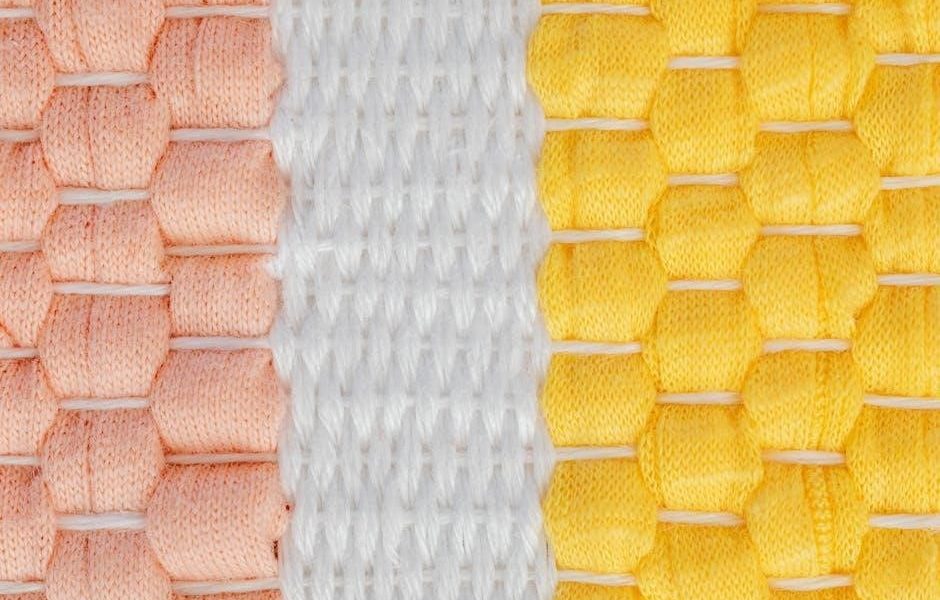
thread galling pdf
Thread galling, also known as cold welding, is a common issue in threaded fasteners where heavy pressure causes male and female threads to seize or stick together, often due to material interaction and friction.

1.1 Definition of Thread Galling
Thread galling, also referred to as cold welding, is a form of adhesive wear that occurs when the surfaces of male and female threads are subjected to heavy pressure, leading to their seizing or sticking together. This phenomenon is particularly prevalent in fasteners made from materials like stainless steel, aluminum, and titanium, which naturally form oxide surface films for corrosion protection. During the tightening process, the pressure between the threads breaks down these protective layers, allowing metal-to-metal contact. This direct contact can cause the threads to lock together, resulting in a situation where the fasteners may appear to pass inspections but become difficult or impossible to remove. Thread galling can range from minor surface scratches to complete thread deformation, making it a critical issue to address in engineering and manufacturing.

1.2 Importance of Understanding Thread Galling
Understanding thread galling is crucial for ensuring the reliability and longevity of threaded fasteners in various applications. When galling occurs, it can lead to significant damage, including seized bolts and nuts that are difficult or impossible to remove without specialized tools. This not only disrupts maintenance schedules but also poses safety risks, particularly in critical systems where failure can have severe consequences. Industries such as aerospace, automotive, and industrial manufacturing rely heavily on fasteners, making thread galling a key concern. If left unaddressed, galling can result in costly repairs, downtime, and even equipment failure. Moreover, understanding the mechanisms behind thread galling enables the implementation of effective prevention strategies, such as proper material selection, surface coatings, and thread design. By addressing this issue, engineers and manufacturers can enhance the performance and durability of their products, ultimately reducing maintenance challenges and ensuring operational efficiency.

Causes of Thread Galling
Thread galling primarily occurs due to material incompatibility, surface conditions, and excessive pressure. Stainless steel, aluminum, and titanium fasteners are particularly prone due to their self-generated oxide layers, which can break down under stress, leading to metal-to-metal bonding and seizing. Additionally, lack of lubrication and improper thread fit can exacerbate the issue, causing friction buildup and galling. Surface roughness and contamination also play a role in initiating this process. Understanding these causes is essential for developing effective prevention strategies to minimize fastener damage and ensure reliable performance in various applications.
2.1 Materials Prone to Galling
Certain materials are more susceptible to thread galling due to their inherent properties. Stainless steel, aluminum, and titanium fasteners are particularly prone because they naturally form oxide surface films for corrosion protection. These oxides can break down during tightening, exposing the bare metal and allowing it to bond with the mating thread. Similarly, other alloys that self-generate protective oxide layers are also at higher risk. The absence of lubrication exacerbates this issue, as the metal-to-metal contact increases friction and the likelihood of galling. Additionally, materials with high hardness and smooth surfaces can contribute to galling, as they allow for greater contact between thread surfaces. Understanding the material-specific tendencies is crucial for selecting appropriate fasteners and implementing preventive measures to avoid galling-related failures in critical applications.
2.2 Surface Conditions and Galling
Surface conditions play a significant role in the occurrence of thread galling. Rough thread surfaces, sharp edges, or machining marks can increase the likelihood of galling by creating high points of contact that are prone to friction and adhesion. Additionally, the absence of lubrication or protective coatings on thread surfaces can exacerbate galling, as it allows direct metal-to-metal contact. Contaminants such as dirt, debris, or corrosion on the thread surfaces can also contribute to galling by altering the frictional properties of the interface. Smooth, well-finished surfaces with proper lubrication are less likely to experience galling. Manufacturing techniques, such as thread rolling, can improve surface smoothness and hardness, reducing the risk of galling. Therefore, maintaining optimal surface conditions is critical to preventing galling in threaded fasteners.

Prevention Methods
Effective prevention methods include applying lubrication or coatings to reduce friction and using proper thread design. Thread rolling during manufacturing enhances surface hardness and smoothness, minimizing galling risks significantly.
3.1 Lubrication and Coatings
Lubrication is a critical method to prevent thread galling by reducing friction between male and female threads. Using silicone-based or PTFE-based lubricants creates a protective barrier, minimizing metal-to-metal contact and wear. Coatings also play a significant role in preventing galling. Applying lubricant-based or metallic coatings, such as zinc or chromium, ensures a smooth surface finish and reduces the risk of threads seizing. These coatings act as a protective layer, preventing the breakdown of oxide films on materials like stainless steel and titanium. Regular application of lubricants and coatings not only extends the lifespan of fasteners but also ensures smooth assembly and disassembly. Proper lubrication and coating techniques are essential for maintaining structural integrity and preventing costly repairs caused by galling. By addressing friction and surface interaction, these methods provide a reliable solution to this common issue in threaded fasteners.

3.2 Thread Design and Fit
Optimizing thread design and fit is essential for minimizing galling risks. Using coarse threads instead of fine threads can significantly reduce the likelihood of galling, as coarse threads have a larger pitch diameter, offering greater thread allowance. This design choice reduces surface contact pressure, which is a primary contributor to galling. Additionally, ensuring proper fit classes, such as 2A-2B, provides the necessary clearance between male and female threads, preventing excessive friction. Thread angle and root radius also play a role; sharper angles and smaller radii can increase stress concentrations, leading to galling. By selecting the appropriate thread form and fit, engineers can design threaded connections that are less prone to seizing. Proper thread design not only enhances functionality but also improves the overall reliability of fastened joints. Regular inspection of thread dimensions ensures compliance with standards, further reducing galling risks in both assembly and operation.

3.3 Manufacturing Techniques
Advanced manufacturing techniques play a crucial role in reducing the risk of thread galling. Thread rolling, for instance, is a superior method compared to thread cutting, as it produces smoother threads with higher surface hardness. This process minimizes surface defects and sharp crests, which are common causes of galling. Additionally, precision machining ensures that thread dimensions and tolerances are accurately maintained, reducing friction during assembly. For materials prone to galling, such as stainless steel, manufacturing techniques like surface grinding or polishing can further enhance thread quality. Proper control of manufacturing speed and tooling also helps prevent overheating, which can degrade surface finishes. Finally, deburring and chamfering of threads are essential steps to remove sharp edges that could lead to premature wear and galling. By employing these techniques, manufacturers can produce high-quality fasteners with reduced susceptibility to thread galling.
Symptoms and Detection
Signs of thread galling include stuck or seized fasteners, visible scratches, and thread deformation. Detection involves visual inspection for surface wear and testing torque levels during assembly to identify unusual resistance.
4.1 Signs of Thread Galling
Thread galling often manifests through visible and physical symptoms; One of the most common signs is the appearance of scratches or scoring on the surface of the threads. This occurs due to the friction and adhesive wear between the male and female threads during tightening or loosening. Additionally, galling can lead to thread deformation, where the threads become misshapen or damaged, making it difficult to achieve a proper fit. In severe cases, the fasteners may seize entirely, requiring significant force to separate them, which can result in breakage. Another indicator is unusual resistance or torque during assembly, signaling that galling is occurring. Over time, repeated galling can weaken the structural integrity of the threads, leading to premature wear and potential failure. Detecting these signs early is crucial to prevent further damage and ensure the reliability of the threaded connection.
4.2 Inspection and Testing
Inspecting and testing for thread galling is essential to identify potential issues before they lead to complete fastener failure. A visual inspection can reveal surface scratches, scoring, or deformation on the threads, which are common indicators of galling. Dimensional measurements should also be conducted to check for thread geometry deviations caused by wear. Torque testing is another effective method, as it can detect abnormal resistance or seizing during assembly or disassembly. If the torque required exceeds specified limits, it may signal the presence of galling. Additionally, microscopic examination of the thread surfaces can uncover adhesive wear patterns or metal transfer, confirming galling. Regular inspection and testing protocols ensure early detection and help prevent catastrophic failures in critical applications. By implementing these measures, manufacturers and engineers can maintain the integrity and reliability of threaded connections across various industries.
Thread galling is a significant issue in the reliability and performance of threaded fasteners, particularly in materials like stainless steel, aluminum, and titanium. It arises from factors such as surface conditions, material properties, and thread design, leading to seizing, wear, and potential failure. Prevention methods, including proper lubrication, coatings, and optimized thread designs, are crucial to mitigate galling. Manufacturing techniques like thread rolling also play a vital role in producing high-quality threads that resist galling. Early detection through inspection and testing is essential to identify and address issues before they escalate. Understanding and implementing these strategies can prevent costly damages and ensure the longevity and integrity of fasteners in various industrial applications. By prioritizing these measures, industries can enhance the reliability of their equipment and maintain operational efficiency.
Related posts:
Archives
- October 2025
- September 2025
- August 2025
- July 2025
- June 2025
- May 2025
- April 2025
- March 2025
- February 2025
- January 2025
- December 2024
- November 2024
- October 2024
- September 2024
- August 2024
- July 2024
- June 2024
- May 2024
- April 2024
- March 2024
- February 2024
- January 2024
- December 2023
- November 2023
- October 2023
- September 2023
- August 2023
- July 2023
- June 2023
- May 2023
Calendar
| M | T | W | T | F | S | S |
|---|---|---|---|---|---|---|
| 1 | 2 | |||||
| 3 | 4 | 5 | 6 | 7 | 8 | 9 |
| 10 | 11 | 12 | 13 | 14 | 15 | 16 |
| 17 | 18 | 19 | 20 | 21 | 22 | 23 |
| 24 | 25 | 26 | 27 | 28 | 29 | 30 |
Leave a Reply
You must be logged in to post a comment.